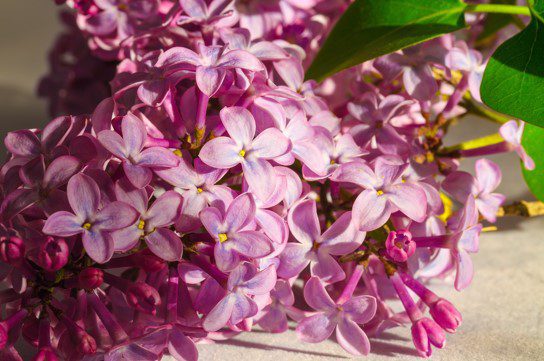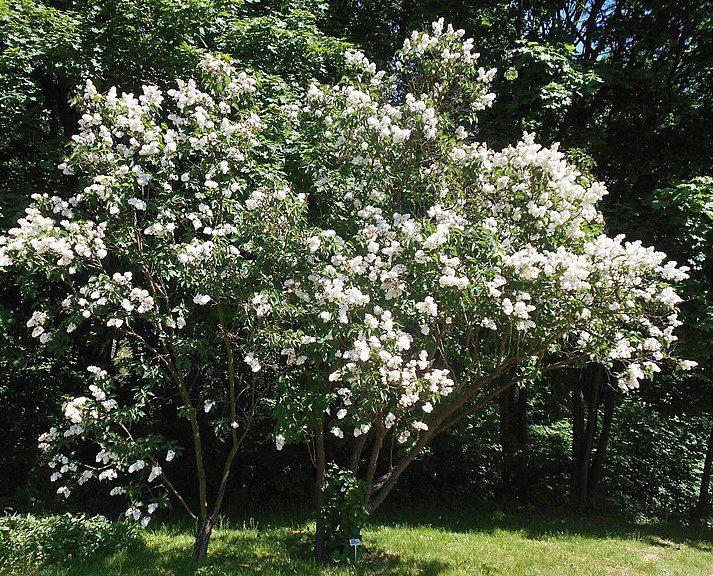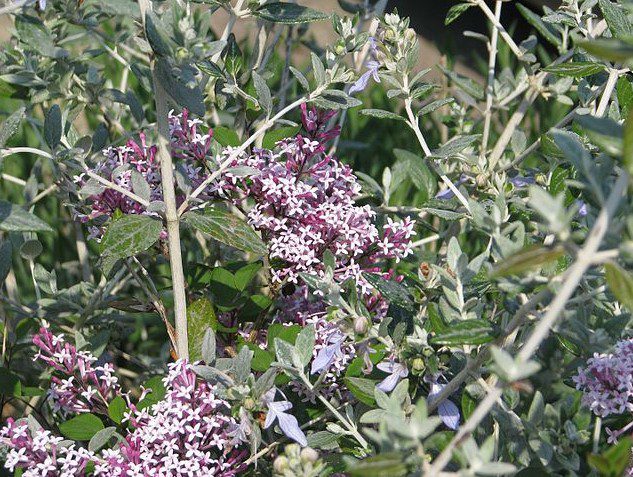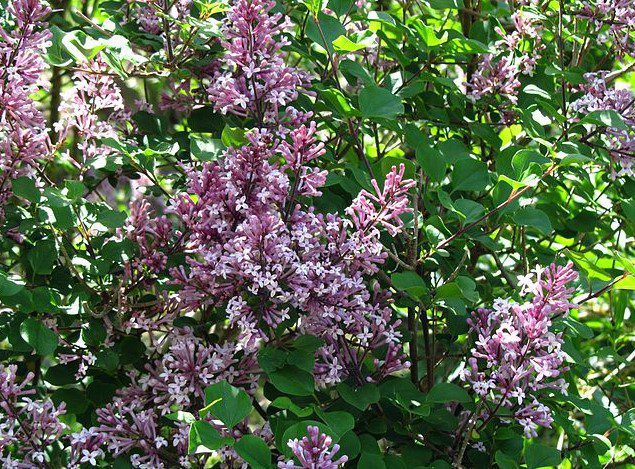Lilac Bushes
One of the most common questions about lilac bushes: “How do I make my lilacs bloom lower on the plant?” When lilac bushes get old, they get taller, producing their flowers at the tips of their branches where we can less enjoy them.
It is possible to encourage blooming closer to our noses by rejuvenating the shrub.
To rejuvenate, it is necessary to cut out old wood from the shrub’s center, completely removing overly woody branches (that is, they only have a few leaves).
Then remove some of the top growth, making sure you leave some green leaves at this time of year so your plant can still undergo photosynthesis.
This will give you a shorter shrub that can get light to the lower branches, so it will produce a profusion of blooms much closer for you to enjoy in the next few years.
It is necessary to lightly trim your lilac bushes annually, right after blooms are finished each season.
All woody ornamental plants that bloom in the spring benefit from being pruned right after their blooms are finished as they prepare their flower buds this year for the following spring.
Other Common Spring Bloomers
Some of the most common spring bloomers are lilac, forsythia, cranberry, nannyberry, caragana, rose tree of China (double-flowering plum), Russian almond, sand cherry, Persian yellow rose, and many fruit-bearing plants.
Woody ornamental shrubs that produce their blooms in the summer are best rejuvenated before they get leaves in the spring; some of the most common summer bloomers are spirea, potentilla, weigela, and hydrangea. Most roses bloom on new wood and are recurrent through the summer.
When making a hedge, it is essential to shape the sides wider at the bottom so that light will reach the lower portions of the plant and produce thick leaf foliage for a healthy-looking hedge.
Lilac Pests
To keep most hedges pest-free, use insecticidal soap or permethrin regularly as prevention. Sulfur is another common preventative agent, available in spray or dust, that prevents fungal problems and keeps spider mites at bay.
The straggly shaped Lilacs may develop over time. Lilacs are often the first to become sloppy, with the fragrant cones of flowers growing higher and higher each year, leaving a sagging trunk at the eye level.
To avoid this issue, make sure you select a small plant or one with another flowering period. Make sure to maintain it with good pruning.
Lilacs must be cut down right after flowering in May or early June, after which all flowering stems must be crushed back down to leaves that are below the flowers.
They will grow in the summer, which will result in flower buds next year. But in winter, you must give your plant a thorough tidy-up.
Cut off dead branches or shoots and any other plant that appears unhealthy, and then remove suckers – the shoots which emerge at the bottom of the tree.
If you’ve never pruned your lilac plant and it’s become high, you can revive the plant by giving it a vigorous cut in the winter.
Cut off one-third from the stem altogether, leaving the healthy young shoots. Then cut off another 1/3 of old shoots next year and the old nodes in the year following.
The result should be the lilac which blooms every year. However, after the third year, all of the branches will be pretty small and young.
Here are 4 of the most beautiful lilac plants to purchase:

- Syringa microphylla Superba: Flowers are fragrant and pinkish in May and April and then in autumn and late summer.

2. Syringa vulgaris ‘Mme. Lemoine’ It is considered to be among the best lilacs. However, the scented twin flowers appear white. It’s also popular because it’s quite a bushy lilac that doesn’t get too tall.

3. Syringa “Red Pixie”: A compact lilac plant with pinkish flowers. It’s ideal for a small or large patio pot.

4. Syringa meyeri “Palibin” It’s not just a more miniature standard lilac that’s quite unusual. However, it is also well-known for its strong scent. It blooms between May and June, then in August and September.



























Comments are closed.